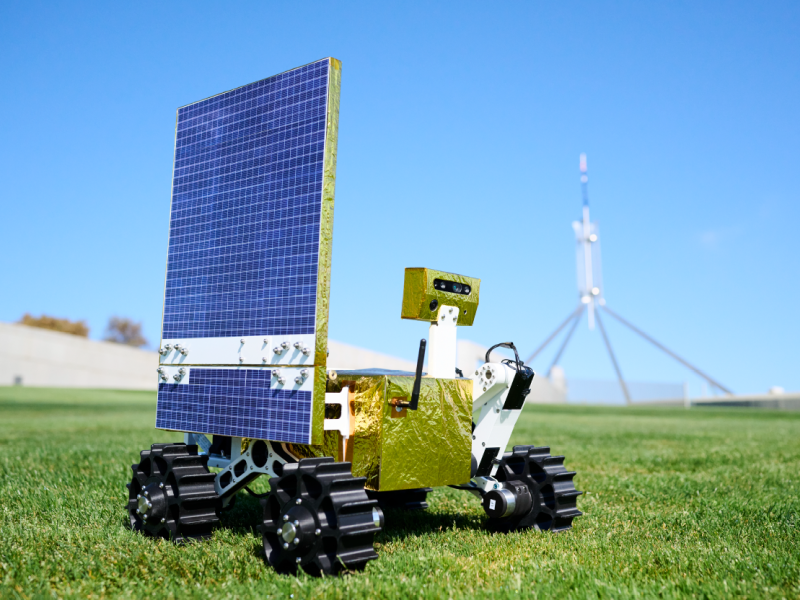The second Australian lunar rover competing for deployment on NASA’s Artemis mission to the moon has been unveiled following a year and a half of development.
Work on the lunar rover has been led by industry group AROSE, engineering services company Nova Systems and the local subsidiary of Dutch multinational Fugro.
The AROSE rover is competing against the Elo2 consortium, which unveiled its rover earlier this year, under the Australian Space Agency’s (ASA) Trailblazer program. The government is expected to decide on the winner around October.
Efforts to deliver Australia’s first lunar rover are part of the ASA’s broader $150 million Moon to Mars initiative to help local industry participate in the United States’ moon missions and subsequently onwards to Mars.

Under stage one of the Trailblazer initiative, the AROSE and Elo2 consortiums each received $4 million from ASA to develop a prototype lunar rover up to a preliminary design review.
The winning ‘Roo-ver’ design will collect lunar soil samples that NASA will experiment on to extract oxygen, a key to the Artemis program’s plan to establish a sustainable human presence on the moon.
The oxygen could be used to produce rocket fuel in support of mars missions launched from the moon.
The winning rover is expected to launch between 2027 and 2028. It was initially expected the winning rover would launch in 2026.
AROSE’s rover will be remotely operated from Fugro’s Space Automation, AI and Robotics Control Complex (SpAARC) in Western Australia, with its development involving industry and university partners from across the country.
Partners range from mining giant Rio Tinto and gas giant Woodside to innovative startups like Raytrace, Advanced Navigation and Infinity Avionics. The project has also received funding from the Western Australian government, which also helped fund SpAARC.
The AROSE consortium has 23 members and collaboration partners including the University of Western Australia, Curtin University, the University of New South Wales and the Queensland University of Technology.
However, proponents of the project would not confirm which of the AROSE members have contributed to the rover project.
Fugro’s space systems director Dawn McIntosh is leading the rover project, bringing experience from a more than 20-year career at NASA’s Ames Research Center.
Ms McIntosh told InnovationAus.com the team will source almost all the rover components from within Australia although the battery and actuators will be sourced from overseas based on “flight heritage” assessments – proof the components can work in space.
If the project moves to stage two of the ASA’s trailblazer initiative the AROSE team will undertake a critical design review, a multidisciplinary assessment to ensure the project can move to the fabrication and demonstration phase. Trials will be undertaken at testbeds across the country.
Fugro SpAARC director Samuel Forbes said the rover team includes staff who have contributed to more than 90 flight missions, including “a whole bunch of people that have relocated their lives from the US”.
“You’ve got this dynamic where you’ve got these people with 20-year careers at NASA, and you’ve got these graduates coming out of Australia, both working in the same room or transitioning from the resources sector to build a lunar rover,” she said.
In a statement, AROSE chief executive Leanne Cunnold said the bid to put an Australian rover on the moon is “unique, not just from a scientific or space perspective, but from a cultural perspective…”.
Do you know more? Contact James Riley via Email.

